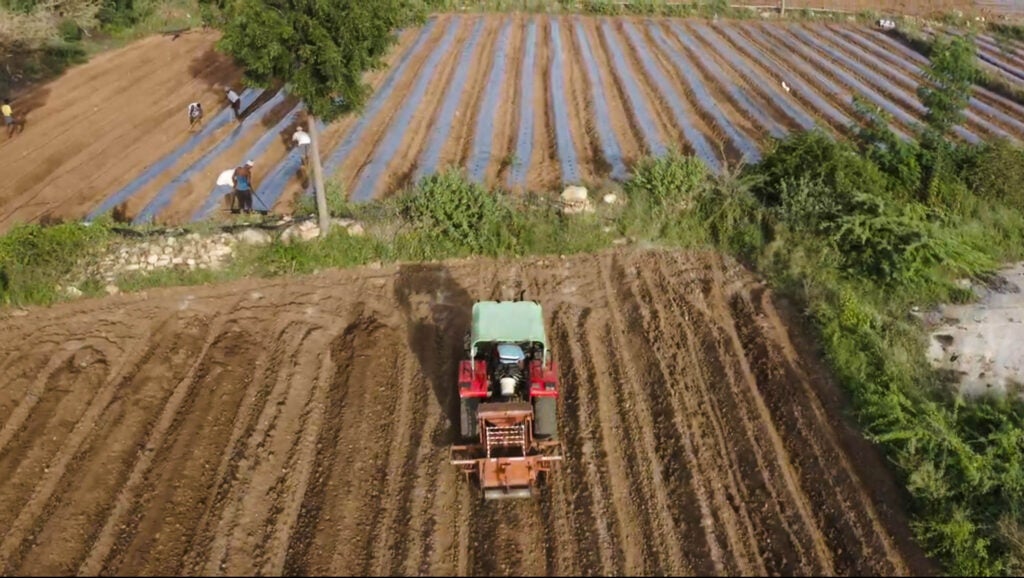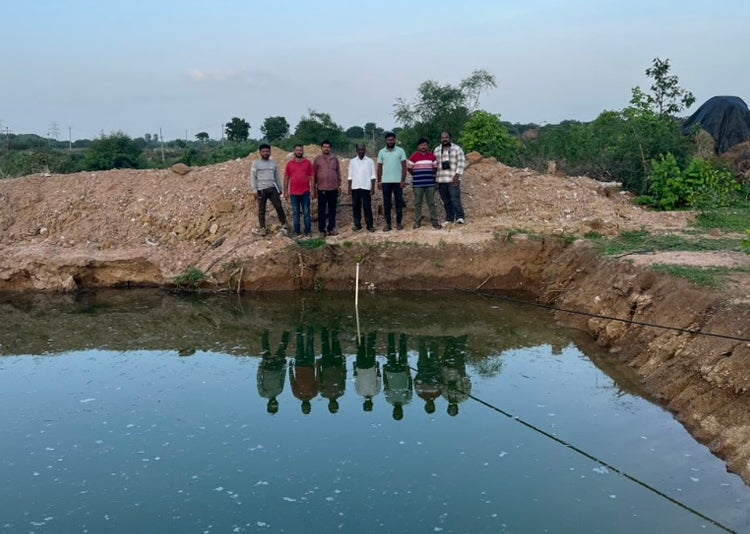
A team installed a staff gauge in a farm pond in Toopran, Telangana, to measure water levels over time. Photo credit: Vanya Mehta
This blog was co-authored by Vanya Mehta from WELL Labs.
Water-saving solutions behave differently across India, depending on a region’s hydrogeology and land use patterns. An intervention that is successful in one landscape may be a failure in another. By nature, water is dynamic, and, with the added variability of climate change, difficult to predict. As our scientific understanding evolves, both of water and solutions to conserve it, there is a need to continuously monitor the impact of these solutions on both farmers and water.
In most cases, the water sector relies on short-term monitoring and evaluation (M&E) assessments that measure inputs and outputs, rather than long-term outcomes. This can lead to gaps in our long-term understanding of water sustainability and equity.
For example, in discussions with four experienced civil society organizations (CSOs) in India, we found that donors required them to report on the number of outputs, such as rainwater harvesting units constructed or number of farmers trained on a water-saving production technique. Water levels, soil moisture, and other indicators of water conservation were not measured during the projects. In such a scenario, it would be difficult to confirm whether the units constructed or farmers trained led to any impactful change in critical outcomes related to groundwater levels, recharge potential, agricultural yields, or total irrigation applied. Both secondary data and farmer recall data is not sufficient to understand variable environmental impacts.
To solve this issue, the hydrology team working on the project (Ishita Jalan, Lakshmikantha NR, Clinton Fernandes, Anas KP, Vivek Grewal, and Gopal Penny) has developed a protocol for field-based, community-led continuous monitoring.
Read More »











